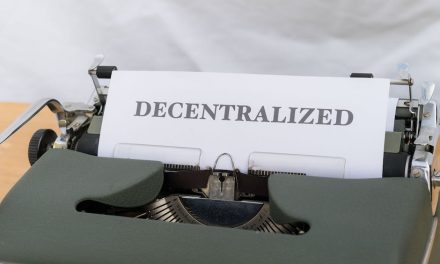Table of Contents
- Introduction
- Importance of Effective Communication in the Workplace
- Strategies for Improving Communication Skills
- The Role of Technology in Enhancing Workplace Communication
- Building Trust and Transparency in Communication
- Overcoming Barriers to Communication
- The Impact of Nonverbal Communication in the Workplace
- Cultivating a Positive Communication Culture
- Measuring the Success of Workplace Communication Initiatives
- Q&A
- Conclusion
“Unlocking potential through effective communication.”
Introduction
Enhancing workplace communication is crucial for the success of any organization. Effective communication fosters collaboration, boosts employee morale, and improves overall productivity. In this article, we will explore the importance of workplace communication and provide strategies for enhancing it in your organization.
Importance of Effective Communication in the Workplace
Effective communication is the cornerstone of any successful workplace. It is the key to building strong relationships, fostering collaboration, and ensuring that tasks are completed efficiently and accurately. In today’s fast-paced business environment, where teams are often spread across different locations and time zones, the ability to communicate effectively has never been more important.
One of the primary reasons why effective communication is so crucial in the workplace is that it helps to prevent misunderstandings and conflicts. When team members are able to clearly express their ideas, thoughts, and concerns, there is less room for misinterpretation. This can help to avoid unnecessary disputes and ensure that everyone is on the same page when it comes to project goals and expectations.
In addition, effective communication can also help to boost employee morale and engagement. When team members feel that their voices are being heard and that they are able to communicate openly with their colleagues and superiors, they are more likely to feel valued and motivated. This can lead to increased job satisfaction and productivity, as well as lower turnover rates.
Furthermore, effective communication is essential for building strong relationships within the workplace. When team members are able to communicate openly and honestly with one another, trust is established, and bonds are formed. This can lead to better collaboration, increased creativity, and a more positive work environment overall.
There are several key components of effective communication in the workplace. One of the most important is active listening. This involves not only hearing what the other person is saying but also truly understanding their perspective and responding in a thoughtful and respectful manner. By actively listening to their colleagues, team members can build stronger relationships and avoid misunderstandings.
Another important aspect of effective communication is clarity. It is essential that messages are conveyed in a clear and concise manner, so that there is no room for confusion or misinterpretation. This can help to ensure that tasks are completed accurately and efficiently, and that everyone is working towards the same goals.
In addition, feedback is a crucial part of effective communication in the workplace. Providing constructive feedback to team members can help them to improve their performance, learn from their mistakes, and grow professionally. It is important that feedback is delivered in a timely and respectful manner, so that it is well-received and leads to positive outcomes.
Overall, effective communication is essential for the success of any workplace. It helps to prevent misunderstandings and conflicts, boost employee morale and engagement, build strong relationships, and improve overall productivity. By actively listening, communicating clearly, and providing constructive feedback, team members can work together more effectively and achieve their goals. In today’s fast-paced business environment, where collaboration and teamwork are more important than ever, enhancing workplace communication is key to success.
Strategies for Improving Communication Skills
Effective communication is the cornerstone of any successful workplace. It is the key to building strong relationships, fostering collaboration, and ensuring that everyone is on the same page. In today’s fast-paced business environment, the ability to communicate clearly and effectively is more important than ever. Poor communication can lead to misunderstandings, conflicts, and decreased productivity. On the other hand, strong communication skills can lead to increased efficiency, higher employee morale, and ultimately, greater success for the organization as a whole.
One of the most important strategies for improving communication skills in the workplace is active listening. Active listening involves fully engaging with the speaker, paying attention to both their words and their body language, and responding in a way that shows you understand and value what they are saying. By practicing active listening, you can build trust and rapport with your colleagues, demonstrate empathy and understanding, and ensure that important information is not overlooked or misunderstood.
Another key strategy for enhancing workplace communication is to be clear and concise in your own communication. Avoid using jargon or technical language that may be confusing to others, and make sure to tailor your message to your audience. Be mindful of your tone and body language, as these can also impact how your message is received. By being clear and concise in your communication, you can avoid misunderstandings and ensure that your message is effectively communicated to others.
In addition to active listening and clear communication, it is also important to be open to feedback and willing to engage in constructive dialogue with your colleagues. Feedback is essential for growth and improvement, and by actively seeking out feedback from others, you can gain valuable insights into how you can improve your communication skills. Be open to receiving feedback, and be willing to make changes based on the feedback you receive. By engaging in constructive dialogue with your colleagues, you can build stronger relationships, foster collaboration, and create a more positive and productive work environment.
Finally, it is important to remember that communication is a two-way street. In addition to being a good listener and communicator, it is also important to be receptive to the ideas and perspectives of others. By actively seeking out different viewpoints and being open to new ideas, you can foster a culture of innovation and creativity within your organization. Encourage open and honest communication among your team members, and create opportunities for them to share their thoughts and ideas. By valuing the input of others and creating a culture of open communication, you can create a more inclusive and collaborative work environment.
In conclusion, enhancing workplace communication is essential for success in today’s fast-paced business environment. By practicing active listening, being clear and concise in your communication, seeking out feedback, and being open to new ideas, you can improve your communication skills and create a more positive and productive work environment. Remember that communication is a skill that can be developed and improved over time, so be patient with yourself and with others as you work to enhance your communication skills. By prioritizing effective communication in the workplace, you can build stronger relationships, foster collaboration, and ultimately, achieve greater success for yourself and your organization.
The Role of Technology in Enhancing Workplace Communication

Effective communication is the cornerstone of any successful workplace. It is essential for employees to be able to communicate clearly and efficiently with one another in order to collaborate effectively, solve problems, and achieve common goals. In today’s fast-paced business environment, technology plays a crucial role in enhancing workplace communication.
One of the key ways in which technology enhances workplace communication is by providing various tools and platforms that make it easier for employees to connect with one another. Email, instant messaging, video conferencing, and project management software are just a few examples of the many technological tools that can help facilitate communication in the workplace. These tools allow employees to communicate in real-time, regardless of their physical location, making it easier for teams to collaborate and stay connected.
In addition to providing tools for communication, technology also helps to streamline the communication process. For example, project management software can help employees track the progress of a project, assign tasks, and communicate with team members all in one place. This not only saves time but also ensures that everyone is on the same page and working towards the same goals.
Furthermore, technology can help to break down communication barriers that may exist in the workplace. For example, language barriers can be overcome with the help of translation software, allowing employees who speak different languages to communicate effectively. Similarly, introverted employees who may struggle to communicate in person can use technology to express themselves more comfortably through written communication.
Another way in which technology enhances workplace communication is by providing a platform for feedback and collaboration. Online surveys, feedback forms, and collaborative tools allow employees to share their thoughts and ideas with one another, providing valuable insights that can help improve processes and drive innovation within the organization. By encouraging open communication and collaboration, technology can help foster a culture of transparency and trust in the workplace.
It is important to note, however, that while technology can greatly enhance workplace communication, it is not a substitute for face-to-face interaction. In-person communication is still essential for building strong relationships, fostering trust, and resolving conflicts. Therefore, it is important for organizations to strike a balance between using technology to enhance communication and ensuring that employees have opportunities for in-person interaction.
In conclusion, technology plays a vital role in enhancing workplace communication by providing tools and platforms that make it easier for employees to connect, collaborate, and communicate effectively. By streamlining the communication process, breaking down barriers, and providing a platform for feedback and collaboration, technology can help organizations improve productivity, foster innovation, and create a positive work environment. However, it is important for organizations to remember that technology is a tool, not a solution, and that face-to-face communication is still essential for building strong relationships and fostering trust in the workplace. By leveraging technology effectively and encouraging open communication, organizations can create a culture of communication that is key to their success.
Building Trust and Transparency in Communication
Effective communication is the cornerstone of any successful organization. It is the key to building trust, fostering collaboration, and driving productivity. In today’s fast-paced business environment, where teams are often dispersed across different locations and time zones, clear and transparent communication is more important than ever. By enhancing workplace communication, organizations can create a more positive and productive work environment, leading to increased employee engagement and ultimately, greater success.
One of the most important aspects of building trust and transparency in communication is ensuring that all team members have access to the information they need to do their jobs effectively. This means providing regular updates on project progress, sharing important company news, and being open and honest about any challenges or obstacles that may arise. When employees feel informed and included in the decision-making process, they are more likely to feel valued and engaged in their work.
Another key component of building trust and transparency in communication is creating a culture of open feedback and dialogue. Encouraging employees to share their thoughts, ideas, and concerns can help to foster a sense of trust and collaboration within the team. By actively listening to feedback and addressing any issues that arise, leaders can demonstrate their commitment to creating a positive and inclusive work environment.
In addition to fostering open communication within the team, it is also important to establish clear channels for communication between different departments and levels of the organization. By breaking down silos and encouraging cross-functional collaboration, organizations can improve decision-making, problem-solving, and innovation. When employees feel that they can easily communicate with colleagues from other departments, they are more likely to share information, ideas, and best practices, leading to greater efficiency and effectiveness.
One of the most effective ways to enhance workplace communication is to leverage technology to facilitate collaboration and information sharing. Tools such as instant messaging, video conferencing, and project management software can help to bridge the gap between remote team members and streamline communication processes. By providing employees with the tools they need to communicate effectively, organizations can improve productivity, reduce misunderstandings, and build stronger relationships within the team.
In conclusion, building trust and transparency in communication is essential for creating a positive and productive work environment. By ensuring that all team members have access to the information they need, fostering open feedback and dialogue, breaking down silos between departments, and leveraging technology to facilitate collaboration, organizations can enhance workplace communication and drive success. When employees feel informed, valued, and included in the decision-making process, they are more likely to be engaged, motivated, and committed to achieving their goals. By prioritizing communication and creating a culture of openness and transparency, organizations can build stronger teams, drive innovation, and ultimately, achieve greater success.
Overcoming Barriers to Communication
Effective communication is essential in any workplace setting. It is the key to building strong relationships, fostering collaboration, and ultimately achieving success. However, despite its importance, many organizations struggle with communication barriers that hinder productivity and efficiency. In this article, we will explore some common barriers to communication in the workplace and discuss strategies for overcoming them.
One of the most common barriers to communication in the workplace is a lack of clarity. When messages are unclear or ambiguous, misunderstandings can easily arise, leading to confusion and frustration among team members. To overcome this barrier, it is important to be concise and specific in your communication. Clearly articulate your thoughts and ideas, and provide context or background information when necessary. Avoid using jargon or technical language that may be unfamiliar to others, and always encourage feedback to ensure that your message has been understood.
Another common barrier to communication is a lack of active listening. In today’s fast-paced work environment, it can be easy to become distracted or preoccupied with other tasks, making it difficult to fully engage with others during conversations. To improve your listening skills, practice active listening techniques such as maintaining eye contact, nodding in agreement, and asking clarifying questions. Show genuine interest in what others have to say, and avoid interrupting or jumping to conclusions. By actively listening to your colleagues, you can build trust and rapport, leading to more effective communication overall.
Cultural differences can also pose a significant barrier to communication in the workplace. In today’s globalized world, many organizations have diverse teams with employees from different cultural backgrounds. These cultural differences can impact communication styles, norms, and expectations, making it challenging to effectively communicate with colleagues from different cultures. To overcome this barrier, it is important to be aware of and respectful of cultural differences. Take the time to learn about your colleagues’ cultural backgrounds, and adapt your communication style accordingly. Be open-minded and flexible, and be willing to learn from others’ perspectives. By embracing diversity and inclusivity, you can create a more inclusive and harmonious work environment.
In addition to cultural differences, language barriers can also impede effective communication in the workplace. When employees speak different languages or have varying levels of proficiency in a common language, misunderstandings can easily occur. To overcome this barrier, organizations can provide language training or resources to help employees improve their language skills. Additionally, using visual aids, gestures, or other non-verbal communication techniques can help bridge the gap between language barriers. Encouraging employees to ask for clarification or repetition when needed can also help ensure that messages are understood correctly.
Finally, technology can both facilitate and hinder communication in the workplace. While tools such as email, instant messaging, and video conferencing have made it easier to communicate with colleagues across different locations, they can also lead to miscommunication or information overload. To overcome this barrier, it is important to use technology mindfully and strategically. Choose the right communication tools for the task at hand, and be mindful of the tone and content of your messages. Avoid relying solely on technology for communication, and make an effort to connect with colleagues in person whenever possible.
In conclusion, effective communication is essential for success in the workplace. By identifying and overcoming common barriers to communication, organizations can foster a culture of open, transparent, and collaborative communication. By being clear and concise in your messages, actively listening to others, respecting cultural differences, addressing language barriers, and using technology mindfully, you can enhance workplace communication and ultimately drive success for your organization.
The Impact of Nonverbal Communication in the Workplace
Effective communication is essential in any workplace setting. It is the key to building strong relationships, fostering collaboration, and ultimately achieving success. While verbal communication is important, nonverbal communication also plays a significant role in how messages are perceived and understood in the workplace.
Nonverbal communication includes gestures, facial expressions, body language, and tone of voice. These nonverbal cues can often convey more meaning than words alone. In fact, research has shown that nonverbal communication makes up a significant portion of our overall communication, with some studies suggesting that as much as 93% of communication is nonverbal.
One of the most important aspects of nonverbal communication in the workplace is body language. Our body language can convey a wealth of information about our thoughts, feelings, and intentions. For example, crossing your arms during a meeting may signal defensiveness or resistance, while maintaining eye contact can convey confidence and attentiveness.
Facial expressions are another important aspect of nonverbal communication. A smile can indicate friendliness and approachability, while a furrowed brow may signal confusion or concern. It is important to be aware of the messages that your facial expressions are sending, as they can have a significant impact on how others perceive you in the workplace.
Tone of voice is also a crucial component of nonverbal communication. The way in which we speak – whether we are speaking loudly or softly, quickly or slowly – can convey a great deal of information about our emotions and intentions. For example, speaking in a calm and measured tone can help to diffuse tense situations, while speaking in a harsh or aggressive tone can escalate conflict.
Nonverbal communication can also play a role in building trust and rapport with colleagues. By being mindful of your body language, facial expressions, and tone of voice, you can create a positive and welcoming environment in the workplace. This can help to foster stronger relationships with your coworkers and improve overall communication within the team.
In addition to enhancing interpersonal relationships, nonverbal communication can also impact how messages are received and understood in the workplace. For example, if your body language is incongruent with your words, it can create confusion and mistrust. By ensuring that your nonverbal cues align with your verbal messages, you can increase the clarity and effectiveness of your communication.
Overall, nonverbal communication plays a crucial role in the workplace. By being mindful of your body language, facial expressions, and tone of voice, you can enhance your communication skills and build stronger relationships with your colleagues. This, in turn, can lead to increased collaboration, improved productivity, and ultimately, greater success in the workplace.
Cultivating a Positive Communication Culture
Effective communication is the cornerstone of any successful organization. It is the key to fostering collaboration, building strong relationships, and ultimately driving business success. In today’s fast-paced and interconnected world, the ability to communicate effectively has never been more important. Cultivating a positive communication culture within the workplace is essential for creating a productive and harmonious environment where employees can thrive.
One of the first steps in cultivating a positive communication culture is to establish open lines of communication throughout the organization. This means creating channels for employees to share their thoughts, ideas, and concerns with management and colleagues. By encouraging open communication, organizations can foster a sense of transparency and trust, which are essential for building strong relationships and promoting collaboration.
Another important aspect of cultivating a positive communication culture is to ensure that communication is clear, concise, and respectful. Miscommunication can lead to misunderstandings, conflict, and decreased productivity. By promoting clear and respectful communication, organizations can avoid unnecessary misunderstandings and foster a more harmonious work environment.
In addition to promoting open and clear communication, organizations should also invest in training and development programs to help employees improve their communication skills. Effective communication is a skill that can be learned and developed over time. By providing employees with the tools and resources they need to improve their communication skills, organizations can help them become more effective communicators and better collaborators.
Furthermore, organizations should also encourage feedback and constructive criticism as part of their communication culture. Feedback is essential for growth and improvement, and by creating a culture where feedback is welcomed and encouraged, organizations can help employees learn from their mistakes and continuously improve their communication skills.
In today’s digital age, technology plays a crucial role in workplace communication. Organizations should leverage technology to facilitate communication and collaboration among employees. From email and instant messaging to video conferencing and project management tools, there are a variety of technologies available that can help streamline communication and improve collaboration within the workplace.
Finally, it is important for organizations to lead by example when it comes to communication. Managers and leaders should model effective communication behaviors and set the tone for open, clear, and respectful communication within the organization. By demonstrating the importance of communication through their own actions, leaders can inspire employees to follow suit and create a positive communication culture within the workplace.
In conclusion, cultivating a positive communication culture is essential for creating a productive and harmonious work environment where employees can thrive. By establishing open lines of communication, promoting clear and respectful communication, investing in training and development programs, encouraging feedback and constructive criticism, leveraging technology, and leading by example, organizations can create a communication culture that fosters collaboration, builds strong relationships, and drives business success. Effective communication is the key to success in today’s fast-paced and interconnected world, and organizations that prioritize communication will undoubtedly reap the benefits of a more engaged and productive workforce.
Measuring the Success of Workplace Communication Initiatives
Effective communication is the cornerstone of any successful organization. It is the key to fostering collaboration, building trust, and driving productivity. In today’s fast-paced business environment, where teams are often dispersed across different locations and time zones, the need for clear and efficient communication has never been more critical. As such, many companies are investing in workplace communication initiatives to improve their internal communication processes.
Measuring the success of these initiatives is essential to ensure that they are achieving their intended goals. There are several key metrics that organizations can use to evaluate the effectiveness of their workplace communication efforts. One of the most common metrics is employee engagement. Engaged employees are more likely to be productive, motivated, and committed to their work. By measuring employee engagement levels before and after implementing communication initiatives, organizations can gauge the impact of these efforts on employee morale and satisfaction.
Another important metric for measuring the success of workplace communication initiatives is employee feedback. Gathering feedback from employees about their experiences with communication tools and processes can provide valuable insights into what is working well and what needs improvement. This feedback can be collected through surveys, focus groups, or one-on-one interviews. By analyzing this feedback, organizations can identify areas for improvement and make adjustments to their communication strategies accordingly.
In addition to employee engagement and feedback, organizations can also measure the success of workplace communication initiatives by tracking key performance indicators (KPIs) related to communication. These KPIs may include metrics such as email open rates, response times to inquiries, meeting attendance, and the use of collaboration tools. By monitoring these KPIs over time, organizations can assess the impact of their communication initiatives on productivity, efficiency, and overall business performance.
Furthermore, organizations can measure the success of workplace communication initiatives by evaluating the effectiveness of their internal communication channels. This may involve assessing the reach and engagement of communication tools such as intranet portals, email newsletters, and team collaboration platforms. By analyzing metrics such as user engagement, click-through rates, and content consumption, organizations can determine which communication channels are most effective in reaching and engaging employees.
In addition to quantitative metrics, organizations can also measure the success of workplace communication initiatives through qualitative assessments. This may involve conducting focus groups or interviews with employees to gather their perspectives on the effectiveness of communication tools and processes. By listening to employees’ feedback and incorporating their suggestions into communication strategies, organizations can ensure that their initiatives are meeting the needs and expectations of their workforce.
In conclusion, measuring the success of workplace communication initiatives is essential for organizations to assess the impact of their efforts on employee engagement, productivity, and overall business performance. By tracking key metrics such as employee engagement, feedback, KPIs, and the effectiveness of communication channels, organizations can evaluate the effectiveness of their communication strategies and make data-driven decisions to improve their internal communication processes. Ultimately, enhancing workplace communication is the key to fostering a positive and productive work environment that drives success and innovation.
Q&A
1. Why is workplace communication important?
Effective communication is essential for building strong relationships, fostering teamwork, and increasing productivity in the workplace.
2. How can workplace communication be improved?
Workplace communication can be improved by promoting open and honest communication, providing training on effective communication skills, and utilizing various communication tools and technologies.
3. What are the benefits of enhancing workplace communication?
Enhancing workplace communication can lead to improved employee morale, increased collaboration, better problem-solving, and ultimately, greater success for the organization.
4. How can leaders promote effective communication in the workplace?
Leaders can promote effective communication by setting a positive example, actively listening to employees, providing feedback, and creating a culture that values open communication.
5. What role does technology play in workplace communication?
Technology plays a crucial role in workplace communication by providing various tools such as email, instant messaging, video conferencing, and collaboration platforms to facilitate communication among employees.
6. How can cultural differences impact workplace communication?
Cultural differences can impact workplace communication by influencing communication styles, preferences, and interpretations. It is important for employees to be aware of and respectful of cultural differences in order to communicate effectively.
7. What are some common barriers to effective workplace communication?
Common barriers to effective workplace communication include poor listening skills, lack of clarity in communication, language barriers, distractions, and conflicting priorities.
8. How can feedback be used to improve workplace communication?
Feedback can be used to improve workplace communication by providing employees with constructive criticism, recognizing and reinforcing positive communication behaviors, and encouraging ongoing communication improvement efforts.
Conclusion
Effective workplace communication is essential for the success of any organization. By improving communication among employees, managers, and teams, companies can increase productivity, boost morale, and foster a positive work environment. Investing in communication training and tools can lead to better collaboration, problem-solving, and decision-making, ultimately driving the success of the business. In conclusion, enhancing workplace communication is the key to achieving success in today’s competitive business world.





